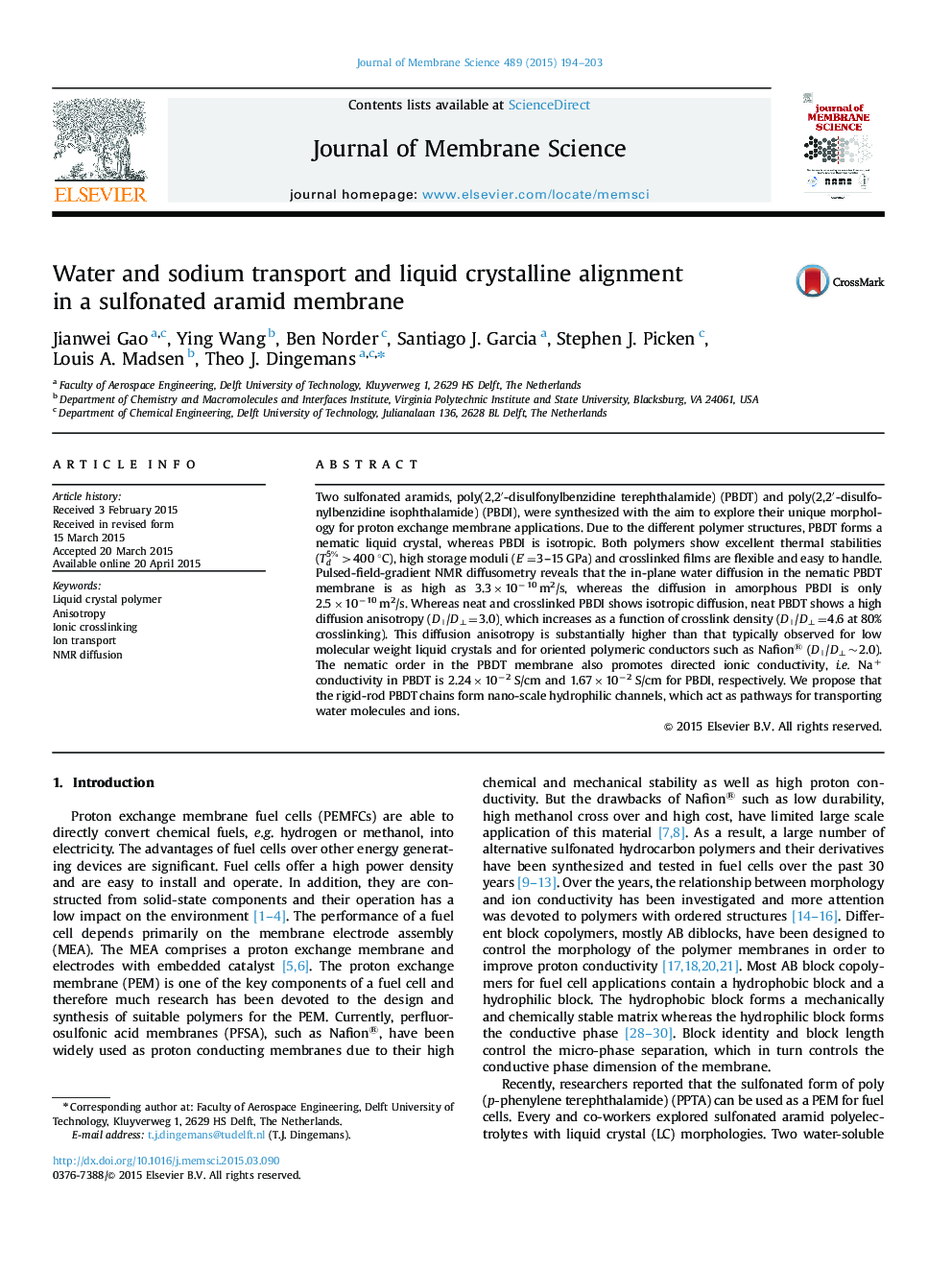| Article ID | Journal | Published Year | Pages | File Type |
|---|---|---|---|---|
| 632904 | Journal of Membrane Science | 2015 | 10 Pages |
•Crosslinkable membranes based on a liquid crystal sulfonated aramid (PBDT).•In-plane LC order results in high in-plane diffusion coefficients for water and Na+.•PBDT chains form nano-scale hydrophilic channels.
Two sulfonated aramids, poly(2,2′-disulfonylbenzidine terephthalamide) (PBDT) and poly(2,2′-disulfonylbenzidine isophthalamide) (PBDI), were synthesized with the aim to explore their unique morphology for proton exchange membrane applications. Due to the different polymer structures, PBDT forms a nematic liquid crystal, whereas PBDI is isotropic. Both polymers show excellent thermal stabilities (Td5%>400 °C), high storage moduli (E′=3–15 GPa) and crosslinked films are flexible and easy to handle. Pulsed-field-gradient NMR diffusometry reveals that the in-plane water diffusion in the nematic PBDT membrane is as high as 3.3×10−10 m2/s, whereas the diffusion in amorphous PBDI is only 2.5×10−10 m2/s. Whereas neat and crosslinked PBDI shows isotropic diffusion, neat PBDT shows a high diffusion anisotropy (D∥/D⊥=3.0), which increases as a function of crosslink density (D∥/D⊥=4.6 at 80% crosslinking). This diffusion anisotropy is substantially higher than that typically observed for low molecular weight liquid crystals and for oriented polymeric conductors such as Nafion® (D∥/D⊥~2.0). The nematic order in the PBDT membrane also promotes directed ionic conductivity, i.e. Na+ conductivity in PBDT is 2.24×10−2 S/cm and 1.67×10−2 S/cm for PBDI, respectively. We propose that the rigid-rod PBDT chains form nano-scale hydrophilic channels, which act as pathways for transporting water molecules and ions.
Graphical abstractFigure optionsDownload full-size imageDownload high-quality image (135 K)Download as PowerPoint slide
